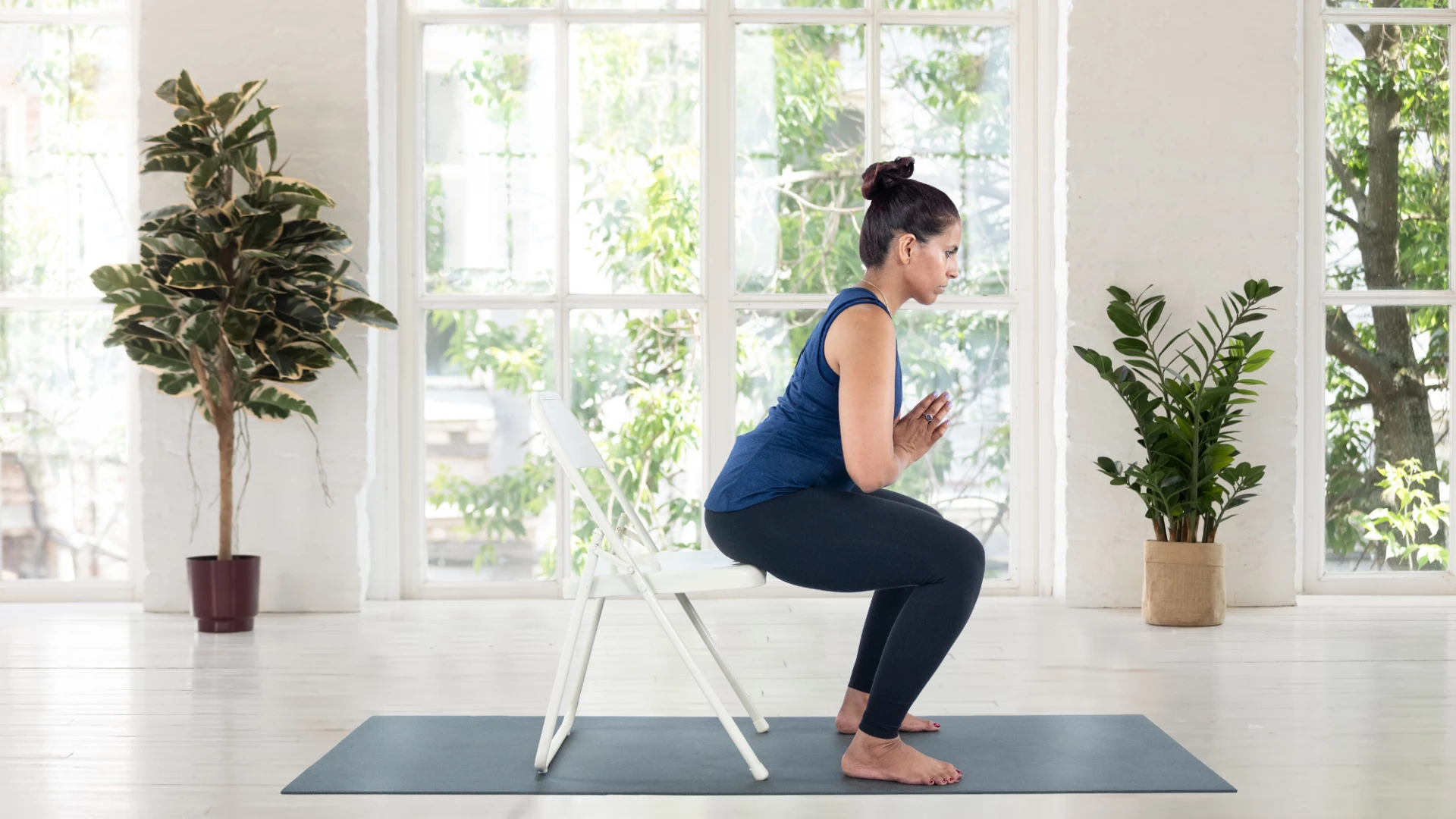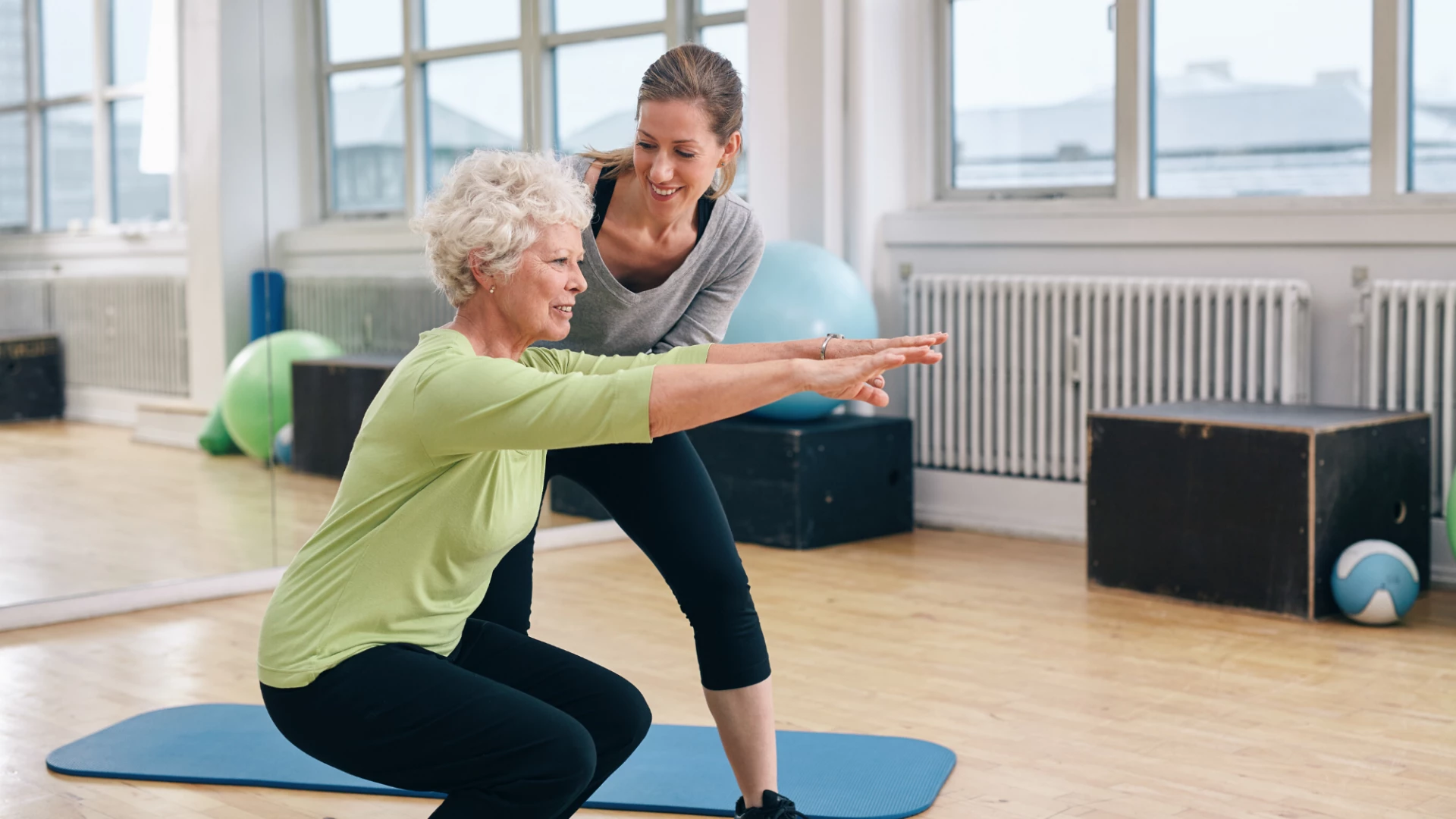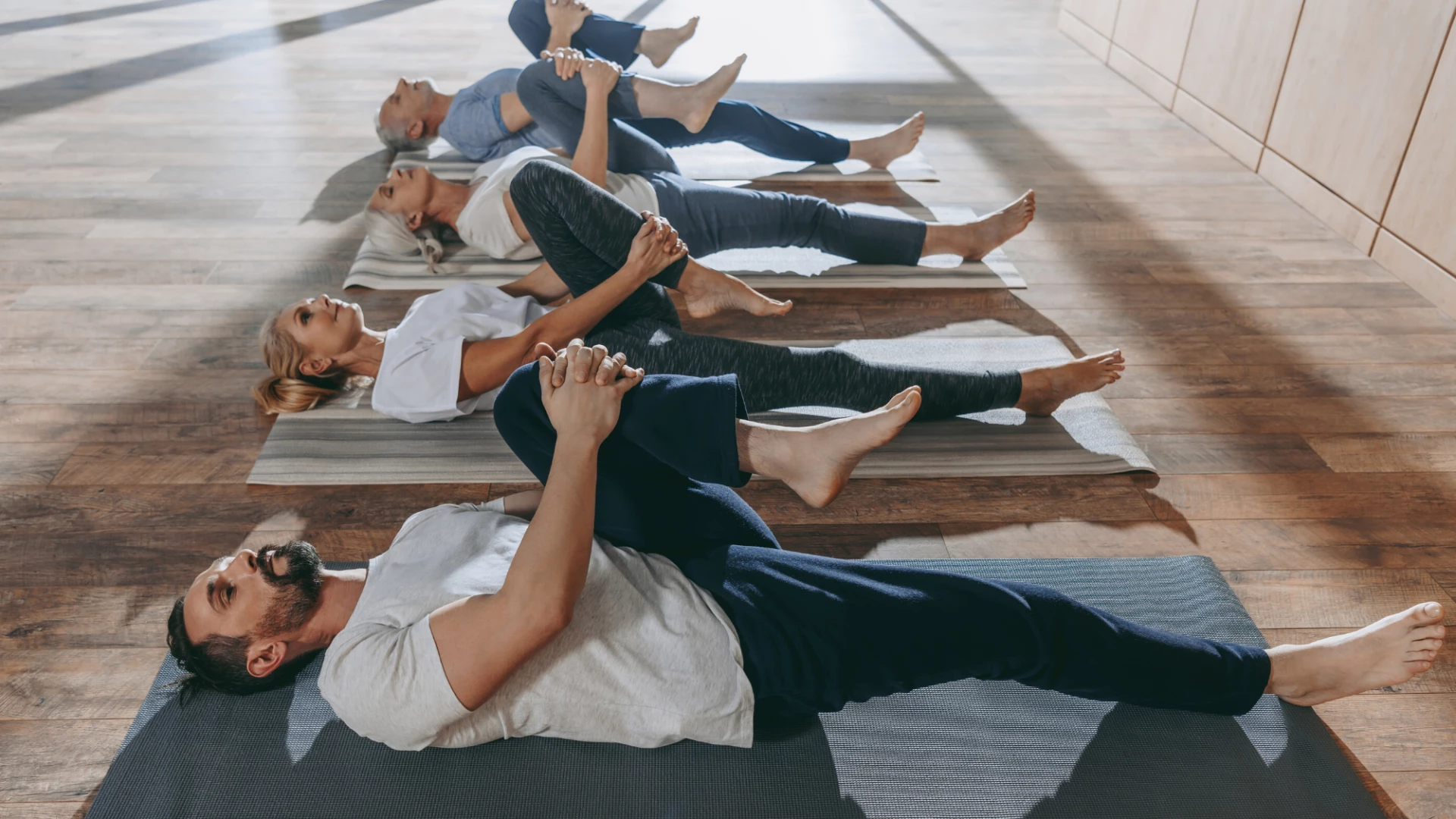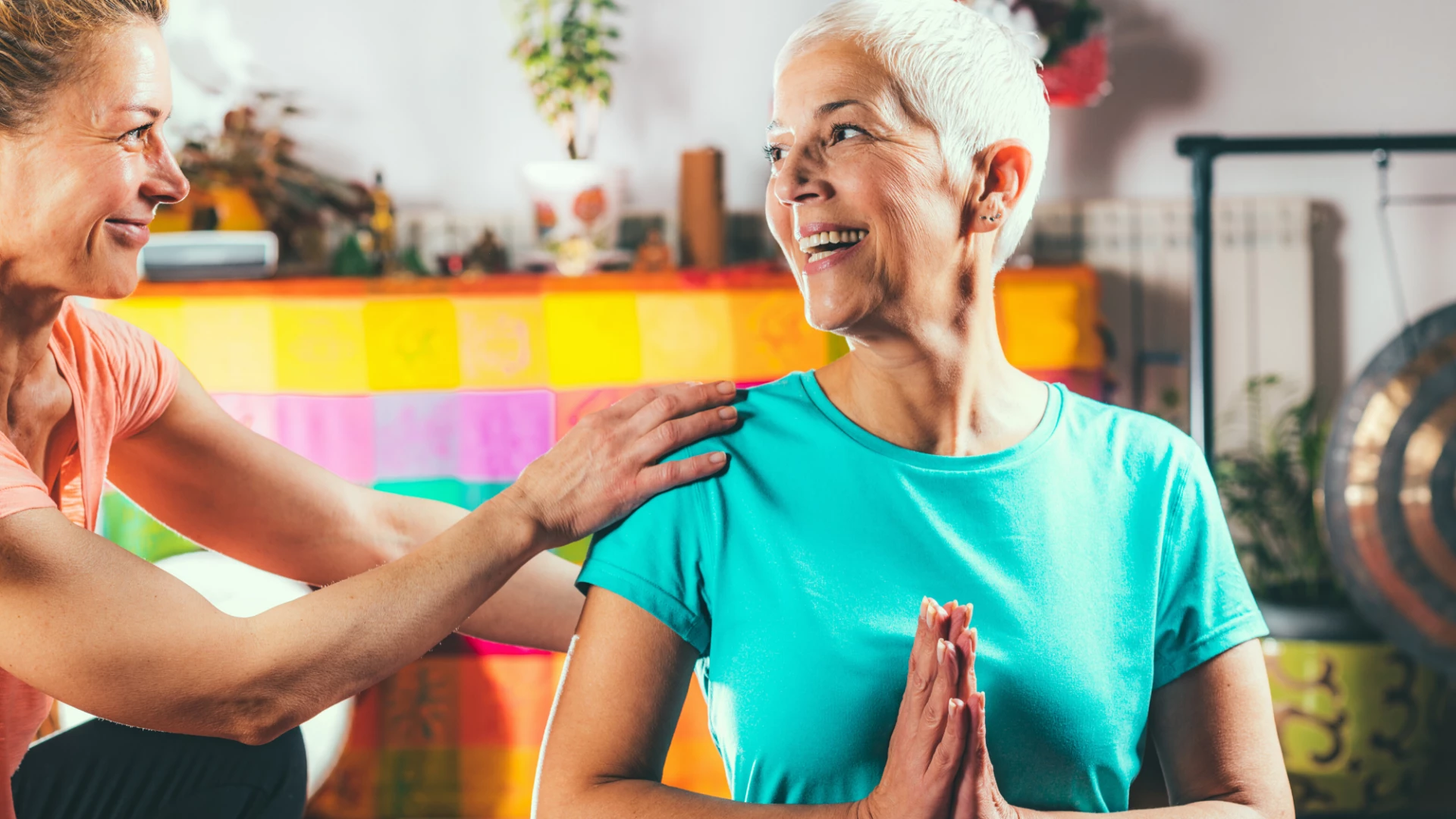Yoga Therapy: Relief from Symptoms of Parkinson’s Disease

Parkinson’s disease is an age-associated, progressive neurological disorder that affects movement. It all starts with resting tremors progressing to a noticeable tremor to full-blown tremors, joint stiffness, and slowing of movement.
As the condition progresses, the individual’s face may show little or no expression; the arms remain stiff while walking, and speech is often soft or slurred. Tremors, slowed movement, muscle rigidity, impaired posture and balance, speech changes, and loss of automatic movements aggravate as the individual ages. Although Parkinson’s disease does not have a cure, medications might significantly improve or delay the symptoms.
Most of the symptoms are due to a loss of neurons that produce a neurochemical called dopamine. As the dopamine level decreases, it causes abnormal brain activity, leading to symptoms of Parkinson’s disease. While the exact cause is unknown, risk factors for Parkinson’s disease include:
-
Age: Parkinson’s disease begins in middle or late life, and the risk increases with age. Young adults rarely experience Parkinson’s disease.
-
Heredity: Having a close relative with Parkinson’s disease increases the chances that you’ll develop the disease.
-
Gender: Men are more likely than women to develop Parkinson’s disease.
-
Environmental Toxins: Herbicides and pesticides increase the risk of Parkinson’s disease.
Since the cause of Parkinson’s disease is unknown, doctors are unable to suggest suitable interventions to prevent the disease. However, research studies have shown that regular aerobic exercise might reduce the risk of Parkinson’s disease.
Studies Show Yoga Can Help Parkinson’s Disease Symptoms

There are also a few research studies that suggest that yoga may help counteract Parkinson’s disease symptoms, thereby providing moderate improvement. Yoga, together with meditation, helps to cultivate greater body awareness, thus allowing an individual to resort to suitable interventions when the symptoms aggravate.
If a yoga student has Parkinson’s disease, a competent yoga teacher needs to understand about the student’s condition, the duration, and the extent of the disease. A yoga teacher needs to consider four factors to suggest specific yoga poses to a student with Parkinson’s disease, including mobility, balance, strength, and flexibility.
Based on the above factors, the teacher can also decide whether the student needs suitable support props like a belt, chairs, and bolsters. In fact, I would recommend that students with Parkinson’s disease do not attend a regular public class, but seek out a therapeutic class, as they need extra attention.
What Yoga Poses Are Best for Parkinson’s Patients?

Poses need to focus on improving the sit-to-stand ability, functional mobility, and lower-limb strength. Standing yoga poses—including Utkatasana (Fierce Pose), Virabhadrasana I and II (Warrior Pose I and II), and Vrksasana (Tree Pose)—serve as mobility-focused exercises. This is because they simultaneously target three functionally essential muscle groups: the hip extensors (e.g., hamstrings, gluteus maximus), the knee extensors (e.g., quadriceps), and the ankle plantar flexors (i.e., the muscles used when “curling” the toes).
Balance training is an essential component of therapeutic yoga as persons with Parkinson’s disease fall more frequently than other older adults. Improvement in balance through suitable yoga poses also contributes to reduced fear of falling. This is important, as people who have a fear of falling tend to keep away from physical activity, leading to further decreases in strength, flexibility, and balance, putting them at a higher risk for additional falls.
Improved strength is essential, as muscle weakness progresses in Parkinson’s disease. Holding static postures for a longer time and controlled systematic movement from one pose to the next increases muscular strength. Similarly, incorporating several poses and holding each pose for a specific time improves muscle endurance.
Flexibility is vital since muscle rigidity is a common Parkinson’s disease symptom. An improvement in upper-body flexibility (i.e., shoulder, spine) helps support a more upright posture and, thereby, overcome the stooped posture that often presents in people with Parkinson’s. Yoga poses that focus on hips, quadriceps, and hamstrings are essential for regular stride length to improve balance and overcome the shuffling gait that may occur in people with Parkinson’s disease.
Keeping It Positive

People with Parkinson’s disease often suffer from anxiety and depression. Hence, each yoga session needs to end with 10-15 minutes of meditation and pranayama practice that helps to reduce fear and anxiety. Attention to the inhalation, retention of breath, and exhalation is significant. It usually gets easier over time for the student to stay focused.
Yoga teachers need to keep the sessions fun and mobile and, at the same time, be careful to avoid injury in these sessions. There are several stages of Parkinson’s disease, and symptoms vary among students, so it is important for teachers to speak confidently and clearly, and to maintain a positive attitude as this can keep students at ease. A teacher’s ability to change the postures or offer thoughtful modifications is an essential part of yoga therapy for people with Parkinson’s disease.
Reprinted with permission from Accessible Yoga.

Rammohan (Ram) Rao comes from a family of Ayurvedic practitioners and Vedic teachers in India tracing back to the illustrious Vedic-acharya Rishi Kaundinya (although Ram admits he cannot do the Eka pada or Dwi pada Kaundinyasana). With a doctorate in Neuroscience, Ram was a Research Associate Professor at the Buck Institute for Research on Aging. He focused on various aspects of age-associated neurodegenerative diseases with an emphasis on Alzheimer’s disease. In addition, Ram completed the academic training at the California College of Ayurveda (CCA) and received his certification as a Clinical Ayurvedic Specialist. He has been a faculty member of the California College of Ayurveda and teaches in their Nevada City location.
Ram is also a dedicated Hatha yoga practitioner and is a Registered Yoga Teacher from Yoga Alliance USA. In his spare time, he offers consultations in YAMP techniques (Yoga, Ayurveda, Meditation & Pranayama). Ram has published several articles in major Yoga/Ayurveda magazines and has been a featured speaker in several national and international meetings and symposia. He is a member of the National Ayurvedic Medical Association (NAMA) and is on the Research Board of the Association of Ayurvedic Professionals of North America (AAPNA).



